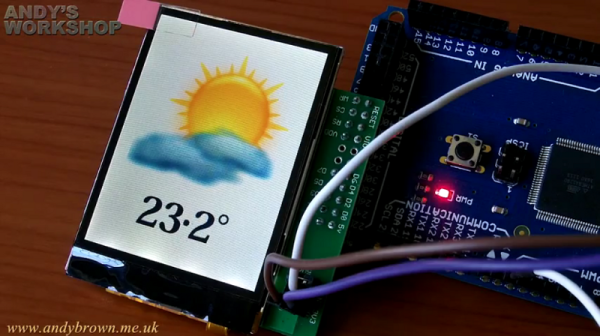[Andy] has been hard at work reverse-engineering the Nokia N82 2.4 inch cell phone display for use with an Arduino. As pointed out in the article, this same 2.4 inch display can be found in at least seven other Nokia products, so they are readily available. The panels can be found for as low as 3 pounds (or a little less than 5 dollars) on Ebay.
The results are quite good and can be seen in the videos after the break. The first demo displays a simulated weather report, and the second displays some JPEG images. Although an Arduino Mega was used in this demonstration, a standard Arduino can be used as well. Schematics as well as a bill of materials is included in the article, however if you’d rather just buy a board, he’s selling the rest of what he’s built on a first come first served basis. No word on how many he has in stock though!
Continue reading “Use A Nokia N82 TFT Panel With Your Arduino”

















